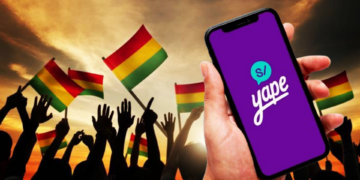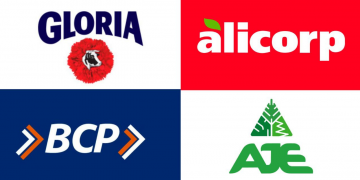Crédito: fuente
Mayor Bill de Blasio announced on Sunday that he would reopen public elementary schools, abruptly shifting policy in the face of widespread criticism that officials were placing more of a priority on economic activities like indoor dining than the well-being of New York City’s children.
Mr. de Blasio said that middle and high schools would remain closed, but he also signaled that he would overhaul how the city manages schools during the pandemic, which has forced millions of children in the United States out of schools and is widely perceived to have done significant damage to their education and mental health.
The mayor said the city would abandon a 3 percent test positivity threshold that it had adopted for closing the school system, the largest in the country, with 1.1 million children. And he said the system would aim to give most parents the option of sending their children to school five days a week, which would effectively end the so-called hybrid learning system.
Students can return only if they have already signed up for in-person learning, meaning fewer than 335,000 of the city’s schoolchildren, or roughly a third, are even eligible.
Children in pre-K and elementary school can return starting Dec. 7. Mr. de Blasio also announced that students with the most complex disabilities can return on Dec. 10.
“Whatever happens ahead, we want this to be the plan going forward,” Mr. de Blasio said at a news conference. “We know what we didn’t know over the summer, we know what works from actual experience.”
Starting in the summer, Mr. de Blasio sought to make New York the first big city in the country to fully reopen its public school system. After a series of logistical and political problems forced the mayor to twice delay the start of in-person classes, the city welcomed hundreds of thousands of children back into classrooms about two months ago.
Reopening, despite its many issues, was seen as a major milestone in the city’s long path to recovery. But less than eight weeks after school buildings reopened, Mr. de Blasio on Nov. 18 again shut schools down as a second wave of the outbreak threatened the city.
Still, the number of cases in the school system itself remained very low, so Mr. de Blasio’s decision became a flash point in a broader debate throughout the country and the world over what should be closed during the pandemic. Officials have wrestled with whether to keep classrooms open while forcing restaurants and bars, which are far more likely to spread the virus, to shut their doors.
Mr. de Blasio does not directly control regulations regarding indoor dining, gyms and other facilities — those are the purview of Gov. Andrew M. Cuomo.
Mr. de Blasio’s announcement on Sunday reflects a stark departure from the city’s original approach to managing the schools during the outbreak.
The new blueprint represents the city’s second shot at reopening, after the first attempt was plagued by problems and his threshold to close schools was roundly criticized by parents, politicians and public health experts.
Instead of using a specific metric to close schools, the city will now closely monitor the number of classrooms and schools that close because of multiple confirmed virus cases.
And the mayor had long insisted that the entire public school system should reopen, and that every student, from kindergarten through 12th grade, should have the option of learning in person.
Now, the nation’s largest public school district will operate more like other systems across the country that have reopened, by offering classroom instruction only to young children and students with disabilities.
New York’s schools had extremely low test positivity rates during the roughly eight weeks they were open this fall, and there was wide agreement from everyone from the president of the teachers’ union to the mayor’s top public health officials that schools were safer than they had anticipated.
When school buildings reopen, the city will significantly increase its random testing in schools: rather than testing a sampling of students and staff in each school building once a month, the city will conduct tests weekly. Students will not be allowed to attend school in person unless they have signed consent forms from their parents, allowing them to be tested.
Nothing else about New York City’s safety plan will change: all staff members and students will still be required to wear masks throughout the day, and social distancing will be mandated. But the city will largely shed its hybrid learning plan, under which children physically attended school a few days a week and learned remotely the rest of the time.
The hybrid learning plan was undercut from the start by a series of rules about who could teach and when, which had been agreed upon by the teachers’ union and City Hall.
Teachers could not be required to teach both in-person and online on the same day, and were discouraged from livestreaming lessons in the classroom to children at home, even though other school districts and private schools have adopted that practice.
Many principals and teachers said the rules were nearly impossible to follow, and some schools disregarded them. Some large high schools urged students to stay remote full time, so that schools could more easily offer electives and advanced courses. As a result, in-person high school enrollment has been relatively low.
Parents said that children were delighted to be back in classrooms, even just once or twice a week, but that the quality of education provided under the hybrid plan was sometimes lacking.
Now, hybrid is on its way out in New York City.
That’s partially because students chose in-person learning at far lower rates than Mr. de Blasio had hoped and expected. After predicting over the summer that about 75 percent of the school system would return for classroom instruction come fall, the city recently revealed that just under a third of students actually chose in-person learning.
The percentage of students who can return to classrooms in the coming days will certainly be lower than that, since middle and high school students who opted for in-person classes no longer have that option.
City data has shown that white families, who make up just 15 percent of the public school system, have chosen all-remote learning at the lowest rates.
That means that white students may have a disproportionate presence in city classrooms once they are reopened, and can attend school full time, while hundreds of thousands of children of color may be learning from home until next fall.
The mayor said earlier this fall that families would not have an opportunity to switch from remote to in-person classes for the rest of the school year, so the number of children who return to classrooms next month could be mostly set.
The city’s principals will be forced to once again entirely reprogram their schools, but the new plan will eliminate the need for constant coordination between students learning at home part time and those learning remotely full time, which was extraordinarily complex and frustrating for educators and parents.
Remote learning has been particularly disastrous for the roughly 24,000 children in New York’s District 75, a set of schools for children with disabilities who require the most intensive support, which includes students on the autism spectrum and children with serious cognitive delays.
Online learning simply was not an option, and their parents have spent months asking the city to get their children back into classrooms as often as possible.
Still, there are about 176,000 other children with disabilities in city public schools, including many middle and high schools. It is unclear how many of those students will be able to return to classrooms.









